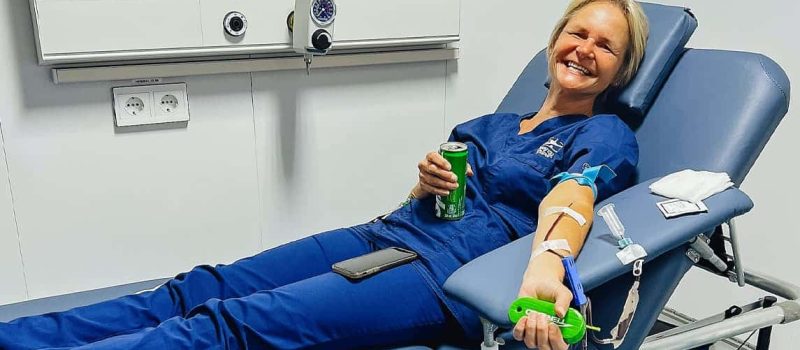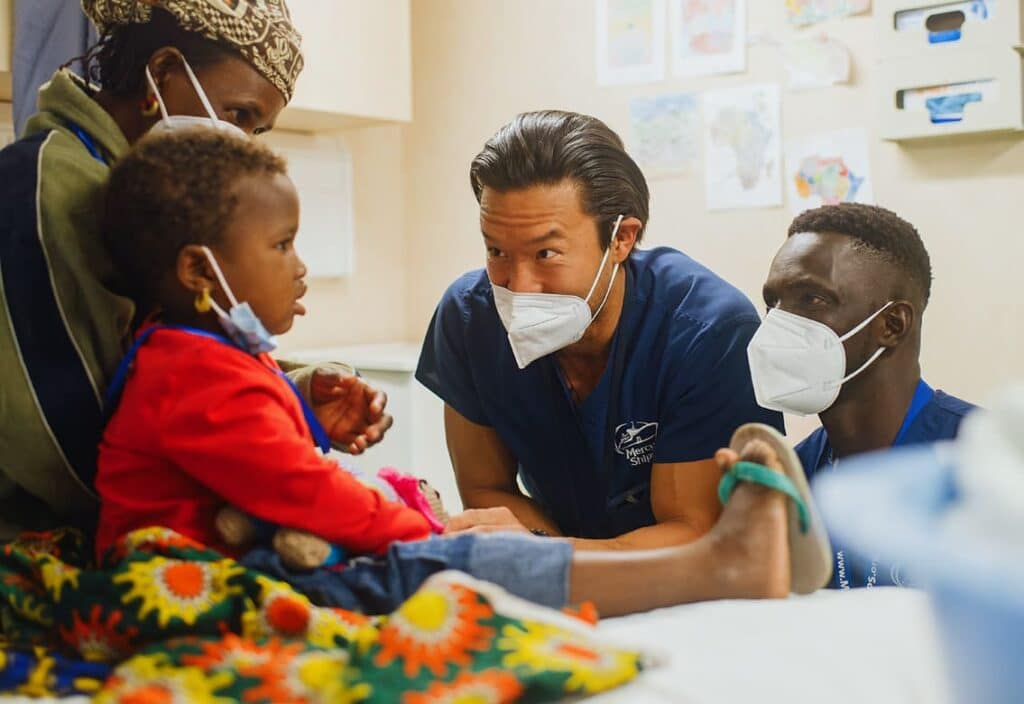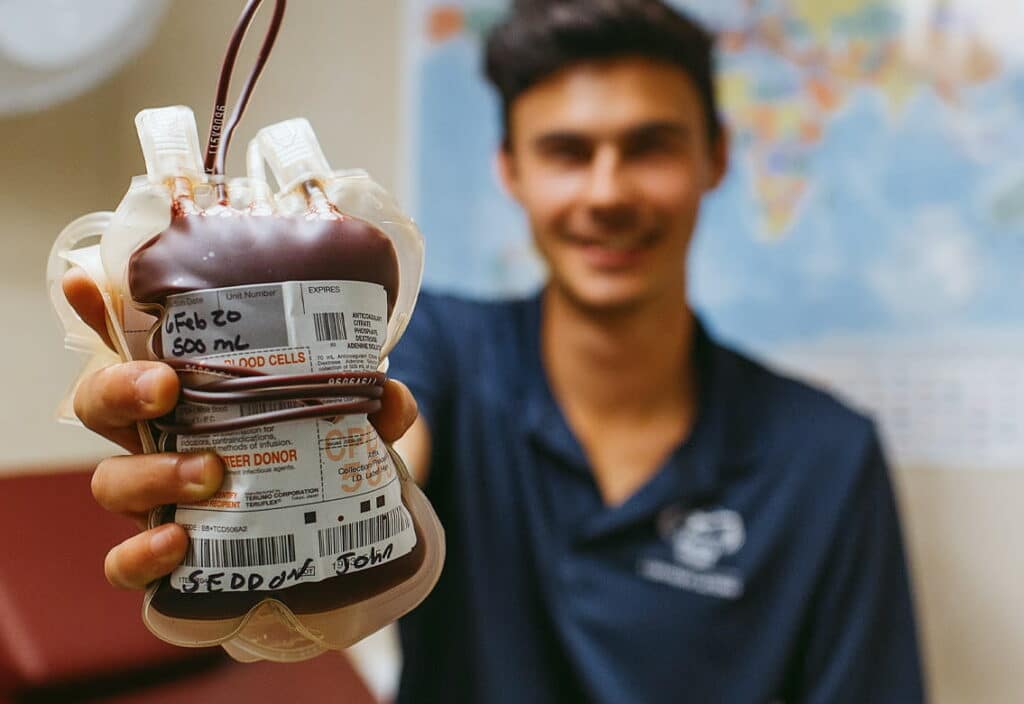World Blood Donor Day
June 14, 2023
Mercy Ships Volunteers Donate in Real Time to Save Lives

The patient’s blood was A+, and she was going to need a lot more of it. Mercy Ships volunteer anesthesiologist Dr. Brian Barki and his team knew this for certain.
As they gathered for a morning huddle on board the Global Mercy®, docked in Dakar, Senegal, they began to make a contingency plan. Dr. Barki was joined by another anesthesiologist, three nurses, and three surgeons, all for one complex procedure.
They knew as they removed the woman’s facial tumor, she could lose a significant amount of blood. They planned to give her two units of blood they had at the ready, and then call for more.
But they wouldn’t get it from a fridge. They’d get it from friends, colleagues, and strangers, who would all donate in real time to save this woman’s life.

A Floating Blood Bank
In a traditional medical setting, donors can be recruited ahead of time at blood drives, and their life-saving gifts can be sealed in bags and stored for later use. A Mercy Ships hospital, cut off from resources back home, is different. It must rely on the people who staff it.
Volunteer crew members sign up to be donors and get their blood tested. They can then be called upon day or night to give blood to patients in need.
“It is very strange giving blood one day, then taking care of the patient who received it the next,” said Danita Gilbert, a volunteer nurse from Peterborough, Ontario. “The patient never knew about it. I knew, though, that I was not just caring for this person, but had had a much more direct impact on their outcome.”
It’s not just medical staff who have that direct impact. Every single volunteer on board has the opportunity to donate.
“Everyone contributes to the moment a patient sees themselves once their bandages are removed,” Danita said.

Life-Saving Delivery
It was Dr. Joe Park’s first week on board the Africa Mercy®. An anesthesiologist from New York City, he was in a new setting with new coworkers – and he had a patient who needed a liter of blood.
“We notified the blood bank that this was the case, and they said, ‘Sure, no problem,’” Dr. Park remembered. Not long after, there was a knock at the door. The lab director arrived with a bag of blood.
“I held it, and it was still warm,” Dr. Park said. “I told her, ‘Thank you so much, where did you get this from?’ And she said, ‘It’s mine.’” Dr. Park thought she was joking.
“Then I looked at her arm, and she still had the bandage from the donation,” he said. “It was incredible.”
For Dr. Park, it was just one of the moments he realized that every single person on board has an impact that is “felt in real time.”
“Everyone works together in this beautiful way,” he said.

'Generosity Kept This Woman Alive’
As Dr. Brian Barki recalls that facial tumor removal on the Global Mercy, he remembers witnessing that same teamwork in motion.
“From the first incision, our lady began to bleed significantly,” he said. Early on, they used one unit of A+ blood they had prepared. Soon after, they used the second.
“At that point, (our senior lab technologist) had already started calling other people to donate,” Dr. Barki said. “After that, things kind of became a blur. We kept losing more and more blood in surgery.”
The lab was short-handed, so Dr. Barki began helping to draw blood. The next donor showed up cheerfully after working a full week of night shifts. They still needed more.
Dr. Barki went to another OR to check in with an anesthesiology resident.
“I was updating him on our situation, and he said, ‘Hey, my blood type is A+,’” Dr. Barki said. “I told him we could really use his blood and that he should go donate. Away he went.” The surgeon in that OR chimed in. He was A+, too. Dr. Barki asked him to go to the lab when he finished his surgery.
“By the end of the day, we lost about 5.5 liters of blood,” Dr. Barki said. “That’s more than all the blood in this woman’s body.”
To replenish it, she received donations from seven different crew members. “Their generosity kept this woman alive,” Dr. Barki said.
By 8:30 p.m., the patient was recovering in the ICU, her tumor was gone, and her breathing tube had been removed.
The donations of the crew make a dramatic impact on people like her. But they also make an impact on fellow volunteers like Dr. Barki and Dr. Park.
“Knowing that all these people came together for this singular mission,” Dr. Park said, “spending time with patients and spending time with their families, you realize that we’re all the same.”

